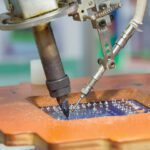CAN bus Connector and Cable Considerations
CAN bus interfaces and modules, with a range of corresponding cable types and connector combinations, serve as the backbone of the CAN communications system. When chosen properly, they deliver performance, cost savings, and reliability.

Controller Area Network (CAN) technology first appeared in European luxury vehicles 30 years ago. Since then, CAN technology has become prevalent in class 7 and 8 trucks, construction equipment, off-highway vehicles, and many passenger vehicles.
Though the CAN acronym is well-known, the technology itself may be unfamiliar to upfitters and installers in the North American marketplace. Modern vehicles contain a variety of systems and computer components often referred to as electronic control units, or ECUs. CAN is the electronic “brain” that allows ECUs to communicate with each other; CAN bus is the wiring over which the control signals travel.
CAN bus cable consists of a pair of wires known as CAN high and CAN low (indicating high and low speed, respectively). Both wires are twisted tightly together to ensure that electromagnetic interference affects the signal in both wires uniformly, limiting errors.
Advantages of implementing CAN protocol
The CAN protocol eliminates excessive wiring by allowing electronic devices to communicate with each other over the single CAN bus multiplex cable. The benefits of this include:
- Speed CAN high wire enables transmission rates of up to 1 megabit per second between a vehicle’s electronic devices and modules (for more information on CAN protocol standards, see ISO 11989-2: 2024).
- Cost and weight savings. Reduced wiring means less labor, lower material costs, and reduced weight. A typical vehicle uses about 1,500 different copper wires totaling nearly a mile in length. Using CAN bus, as much as 50 pounds of wire weight can be trimmed off a vehicle. Based on the current cost of copper wiring, the related material cost savings could range from $800 to $1,000 along with lifetime fuel savings from the reduced weight.
- Error handling and detection. In the CAN bus, each electronic device (or node) can communicate with other nodes on the network. Error handling is built into the CAN protocol — each node checks for errors in transmission and maintains its own error counter. The node system limits the amount of bus capacity being taken up by error messages.
- Durability Robustness and reliability are always top of mind when adding new functions to a vehicle. The CAN communication protocol is self-sustaining and carries signals for long periods of time with minimal maintenance. CAN bus cable is highly resistant to electrical disturbances and can function reliably in high temperature conditions and demanding environments.
The two types of CAN bus cable
CAN bus twisted wire is available in shielded or unshielded varieties. Shielded cable (designated by the “11” in J1939/11) provides shielding from static interference. For vehicles with multiple electrical systems running over CAN bus, shielded cable is advisable. For applications with few connections or short wire runs, unshielded cable (designated J1939/15) may be adequate.
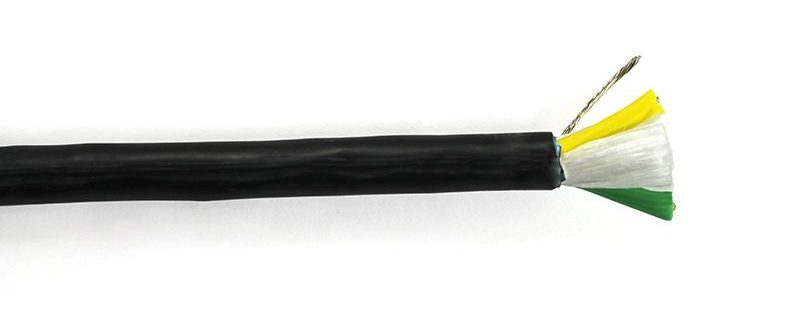
EXRAD CAN Bus shielded cable from Champlain Cable is designed with materials that meet or exceed TXL standards and the impedance, return loss, and attenuation requirements of the network system. TXL wire is made to be used in high-temperature environments while minimizing weight and wire diameter. Shielding reduces the harmful effect of EMI and RFI interference and coupled with controlled impedance can reduce or eliminate data transfer issues.
Sleeving for added protection
CAN bus cable is the lifeblood of the CAN system. If the wire inside gets nicked or damaged, the whole CAN system can be compromised or brought to a halt. When installing the cable near sharp edges or in places subject to heat, high vibrations, or other environmental factors, consider protecting it with woven wrap sleeving made for wire harnessing applications.
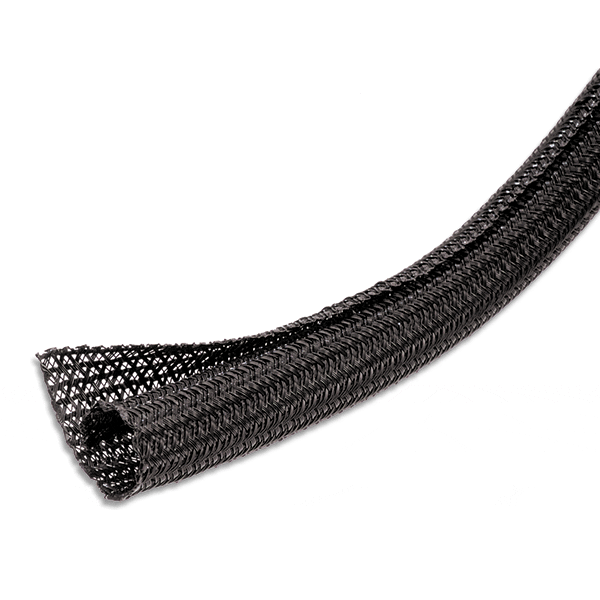
Techflex Flexo F6 Braided Split Sleeving is ideal for protecting CAN bus cable. Its unique braided construction and wide expandability allows quick and easy installation over large connectors and long runs.
Termination and connector considerations
CAN bus cable must be terminated at both ends by resistors that represent the characteristic impedance of the communication protocol — typically 60 or 121 ohms. In today’s market, most connectors for CAN bus come with termination resistors already built in.
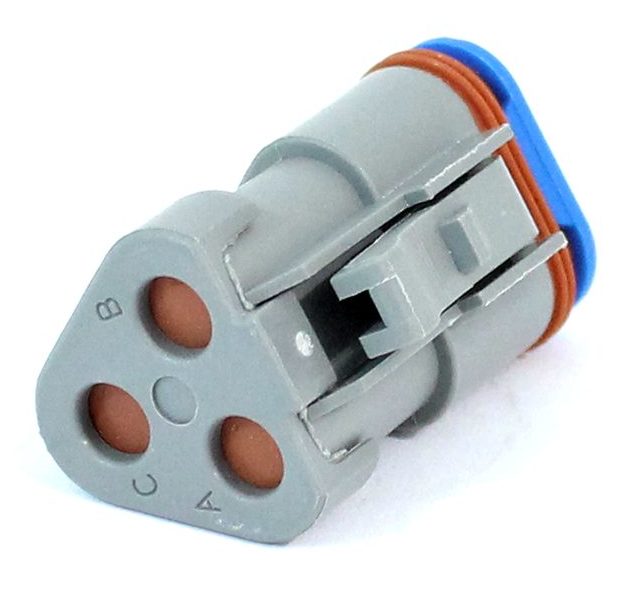
Amphenol Sine System’s AT Series integrated connectors offer a high-performance, reliable, and cost-effective solution for SAE 3-position CAN network requirements. This series is designed to be completely compatible with existing industry standard J1939/11 connectors. It provides a complete line of connectors and includes plugs, receptacles, Y splitter/receptacles, network terminators (with 120 OHM resistors), and keyed wedge locks to prevent mis-mating.
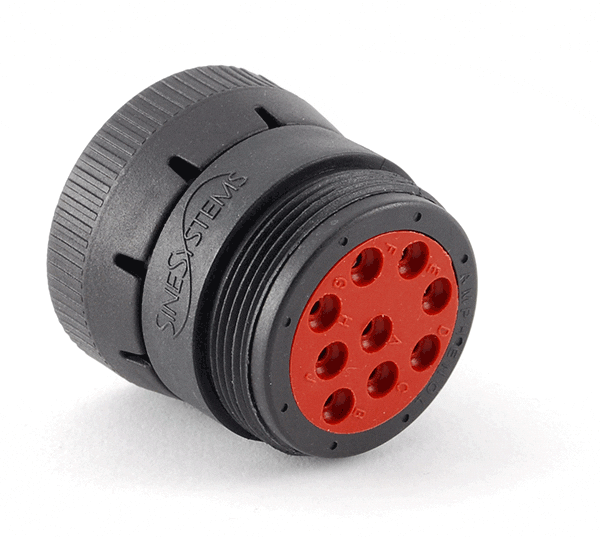
Amphenol Sine System’s AHD Series Type 1 & 2 Data Connectors have been adopted widely by the diesel engine industry (in large part because of their capability of reading up to 500 kilobits per second) and are used for transmitting diagnostic data such as vehicle engine speed, temperature, oil temperature, exhaust emissions, and other customizable options.

Aptiv (Formerly Delphi) GT 150 Series connectors with an integrated 121 OHM resistor provide critical CAN bus communication connectivity for the on/off road commercial vehicle market.
Splitters: An advancement in CAN bus connectors
J1939 splitter connectors are a relatively new and convenient type of connector for use with CAN bus systems. A splitter enables you to break out the CAN signal to multiple devices, replacing the longer, somewhat confusing J1939 harnesses that have been used in the past.
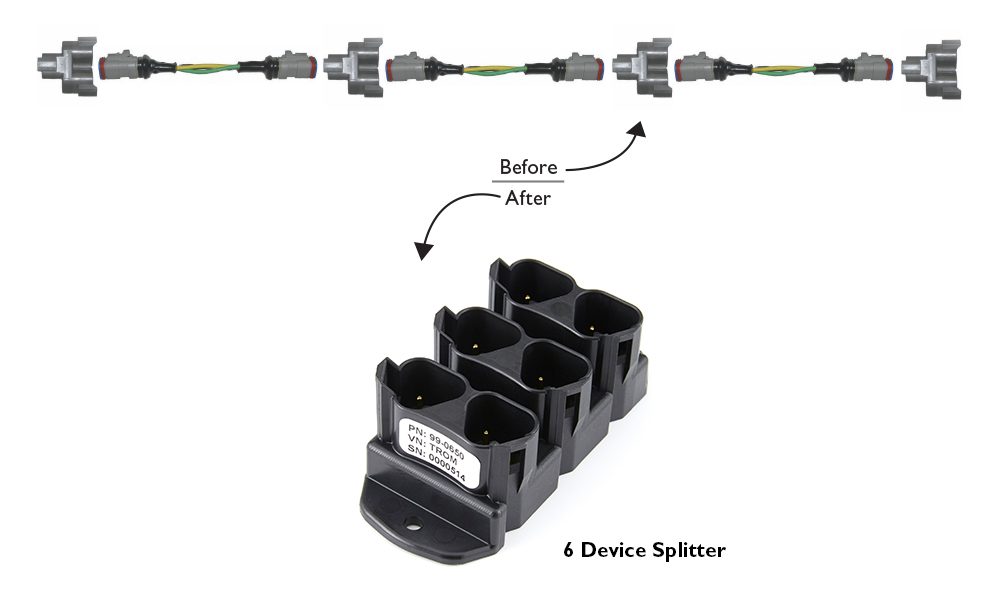
Wiring for CAN bus can be complex and space-consuming. Modern splitter connectors, such as the Trombetta 99-0650 CAN bus control module shown above, offer a compact and easy-to-install alternative.
Here’s a look at two effective connector splitter series that are designed specifically for automotive CAN bus:
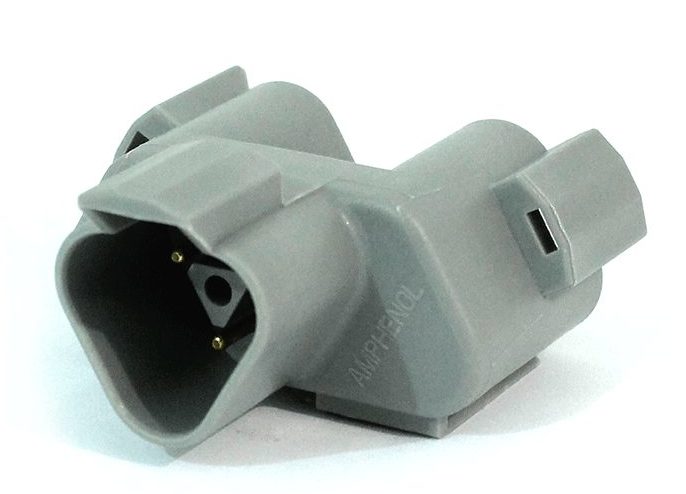
Amphenol Sine Systems AT04 3-pin splitters reduce cost by eliminating Y adapters and extra harnesses typically used to provide additional connections to the CAN bus, while at the same time allowing for shorter cable runs to each device.

Trombetta J1939 sealed automotive style CAN bus splitters provide a cost-effective and space-efficient way of connecting multiple devices to the J1939 CAN bus in a variety of connector sizes and configurations.
CAN bus technology offers considerable cost savings and efficiencies for vehicle manufacturers and upfitters. Working with CAN protocol can also come with challenges. Numerous CAN bus interfaces and modules are available for vehicles, with a range of corresponding cable types and connector combinations to choose from. Cable and connections serve as the backbone of the CAN communications system. When chosen properly, they will help to ensure overall CAN bus performance and reliability.
Visit Waytek to see more CAN bus connectivity solutions.
Like this article? Check out our other Connected Vehicles and Wire & Cable Assemblies articles, our Wire & Cable Market Page, and our 2022 and 2021 Article Archives.
Subscribe to our weekly e-newsletters, follow us on LinkedIn, Twitter, and Facebook, and check out our eBook archives for more applicable, expert-informed connectivity content.
- Hybrid Connectors for Heavy-Duty Transportation - August 23, 2022
- CAN bus Connector and Cable Considerations - February 15, 2022
- Heavy-Duty Connectors for Off-Highway Applications - May 4, 2021



